I love astronomy!
The Day the Earth Smiled (2013, Cassini)
Possibly my favorite photograph of all time, The Day the Earth Smiled is an enormous composite photograph of Saturn taken by the Cassini space probe on July 19, 2013. This breahtaking panorama does not only show Saturn eclipsing the sun, but has a high enough resolution to identify Saturn's individual moons, such as Enceladus and its plumes and Tethys' yellowish color. Not only that, but you can also see Mars, Venus, the Earth, and even a one-pixel big Luna! The best way to view this incredible portrait is definitely on Wikimedia Commons.
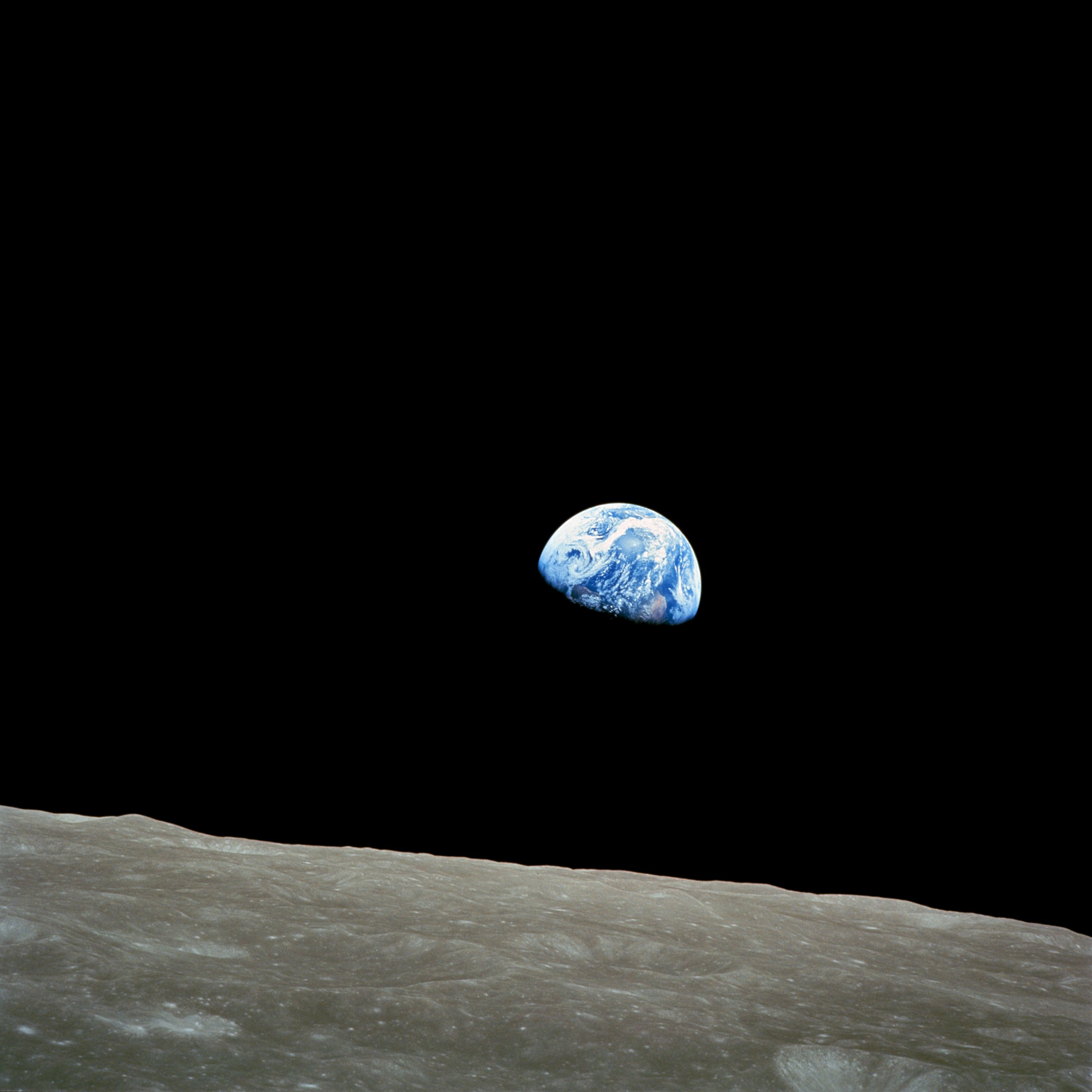
Earthrise (1968, William Anders)
Earthrise is a 1966 black-and-white photograph of the Earth rising above the surface of the moon, taken by the Lunar Orbiter 1 probe. This picture is rough and crude, but it was the first time a picture was taken of the Earth from such an angle. When the Apollo 8 crew orbited the Moon two years later, they were greatly thrilled to see a similar scene. As the Earth came into view through the side window, rising as a blue marble over the dark grey surface of the Moon, the crew was scrambling for a roll of color film. Of course, as the vessel spun around, Anders lost sight of the planet. Crewmate Jim Lovell luckily saw the vista was visible from the hatch window and Anders moved over with the camera. It took a minute and a half to prepare for taking the picture, but the result is one of the most stunning photographs in history.
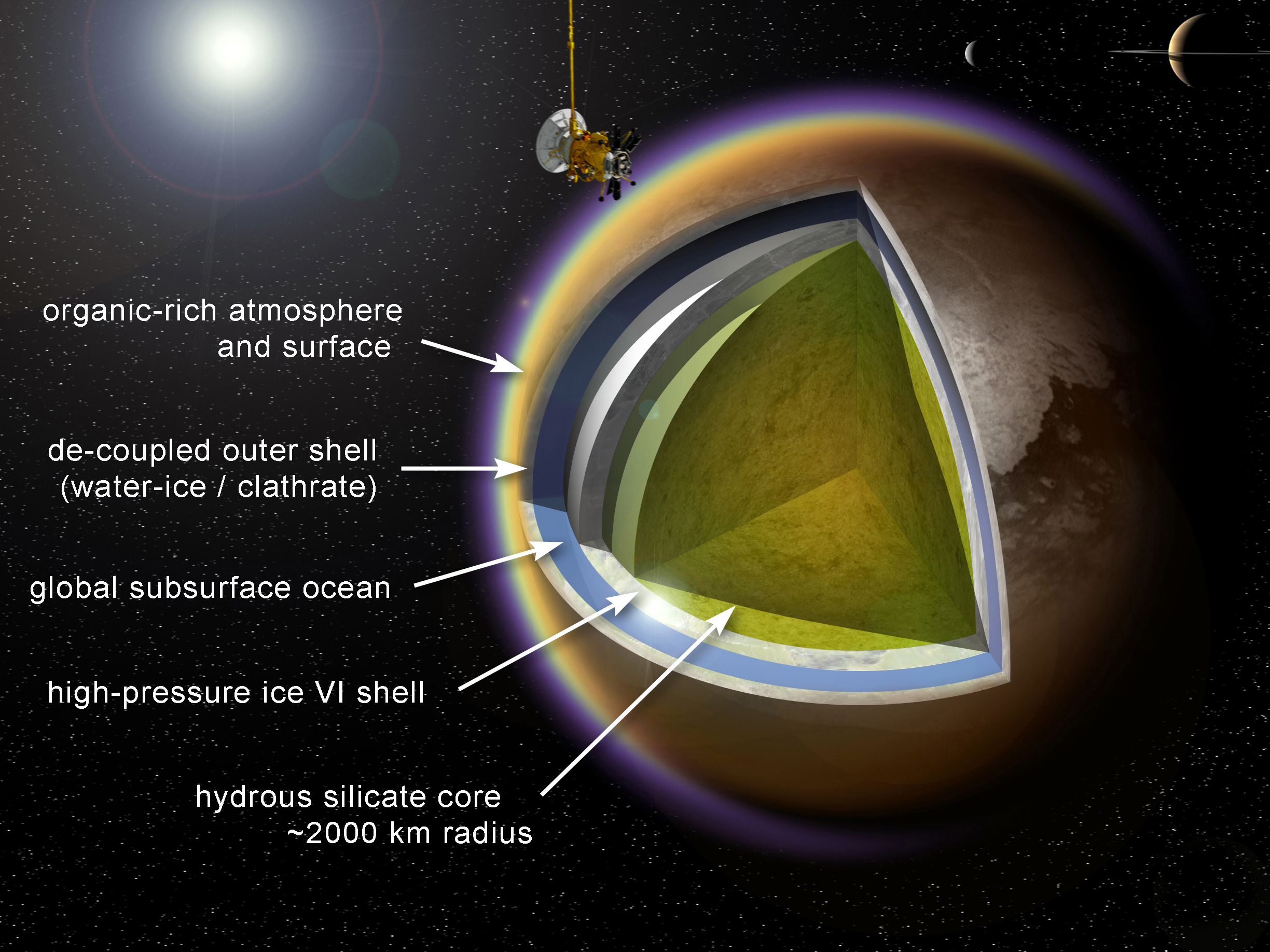
Layers of Titan (2012, NASA)
It is certainly unfortunate that my favorite planet of the Solar System is not particularly photogenic. Titan, largest moon of Saturn and second-largest moon of the Solar System (just slightly smaller than Ganymede), looks like a ball of smoke in pictures. Its thick atmosphere hides a rocky surface. Titan is a lot like Earth, with rain and wind forming dunes, rivers, lakes, and seas. Unlike the Earth's all-important water cycle, however, Titan has a methane cycle: methane clouds raining down into methane lakes and methane seas.
Part of why I love Titan is the fantasy of it all. Due to the planet's incredibly low density, it has a very weak gravity. If you weight 70 kg on Earth, you'd only weigh 10 kg on Titan. Combine this with the moon's very dense nitrogen atmosphere, and humans wearing artificial wings could be able to fly on Titan using muscle power alone. Of course, that's assuming you could somehow survive its frigid -200°C climate.
100 km below Titan's rocky and icy surface lies a massive subsurface ocean, consisting of salty water. I cannot even describe my feelings of wonder and amazement thinking of what may exist in an environment like that. The planet is rich in carbon compounds (cough methane), and might be a excellent place for life to evolve, despite the low temperatures. Of course, now I'm just daydreaming; I hope you will allow me this one fantasy.
Sun-grabbing Sunita Williams (2012, Akihiko Hoshide)
Spacewalks are cool! A person entering the vacuum of space only protected by a few centimeters of spacesuit, tethered to the vesel, making highly technical installations and adjustments to the very system they are living in. Here, on International Space Station spacewalk #165, Williams and Hoshide installed a new Main Bus Switching Unit, and replaced a camera mounted on one of the station's robotic arms. The astronauts apparently also found time to make some really cool pictures, as they always do. To be fair, pretty much all spacewalk pictures are amazing. Here, have some more!
You know what's also cool? The International Space Station! I could easily fill this entire page with ISS photographs and information. Best I can recommend is to just scroll through its Wikipedia article and see what your eyes rest on. But my favorite way to explore the Internation Space Station is by floating through it on Google Street View. It feels like a maze of wires, laptops, tools, and objects I do not have words for.
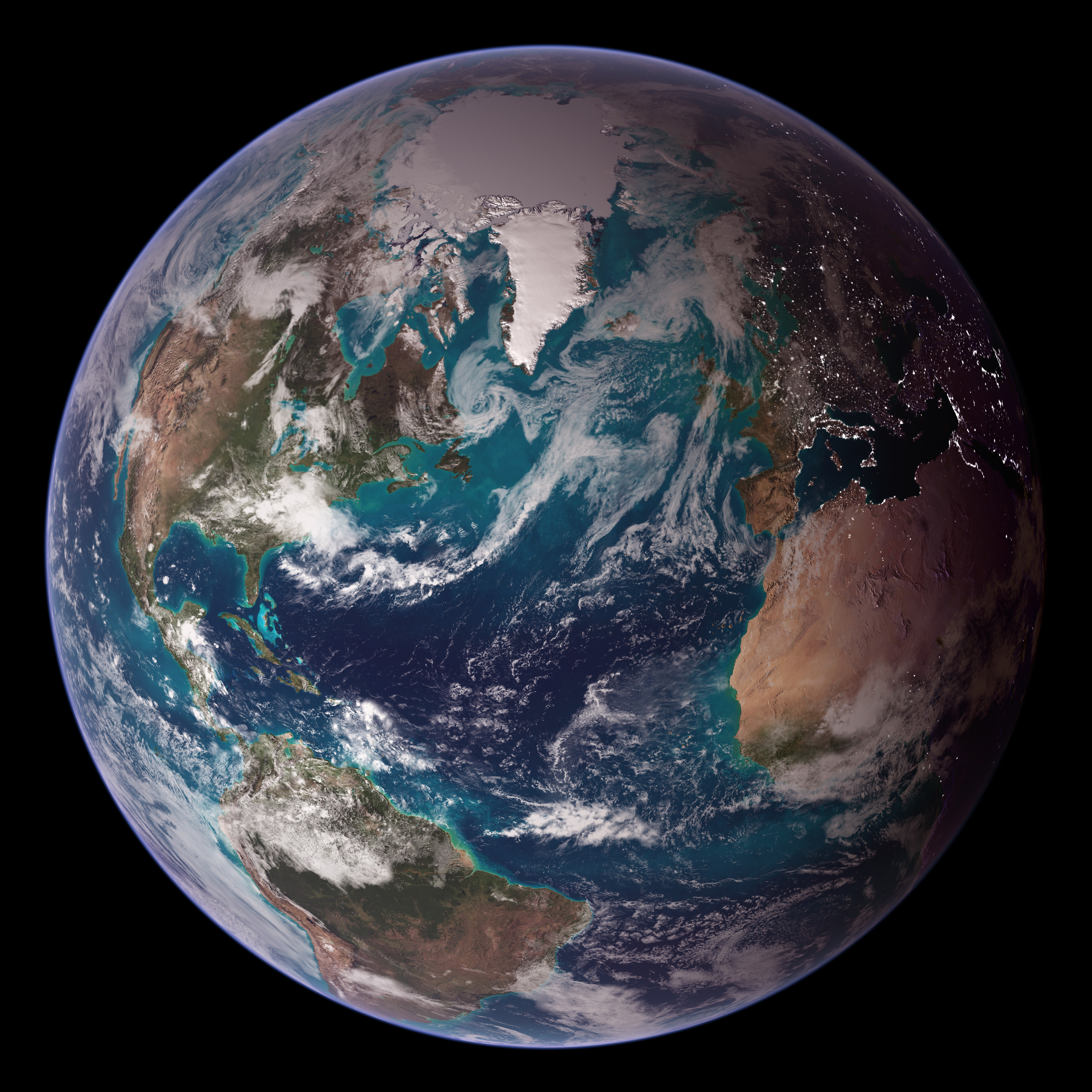
Blue Marble, Western Hemisphere (2007, Reto Stöckli)
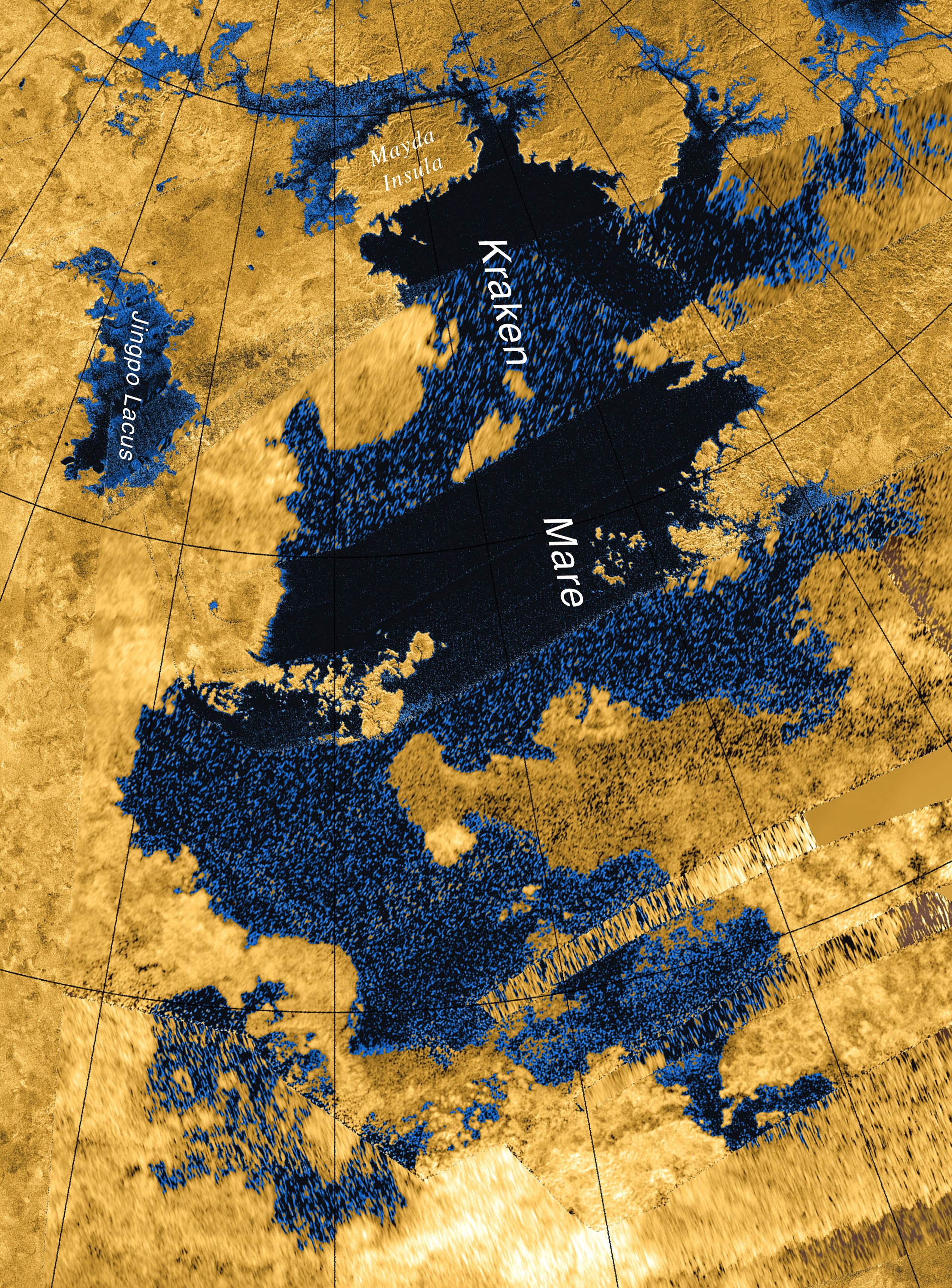
Kraken Mare (2013, NASA/JPL-Caltech/ASI/USGS)
The largest sea of methane on Titan's surface is Kraken Mare, named after the legendary sea monster. Due to the planet's thick atmosphere, this 400,000km² body of methane and ethane was only discovered in 2008 after thoroughly analyzing photographs taken by the Cassini orbiter. This colorized mosaic was produced by compiling data from Cassini's radar instrument from 2004 to 2013. Liquids appear blue and black depending on the way radar bounced off the surface. Nearly all lakes on Titan occur on its northern hemisphere, as does Kraken Mare. The strait of liquid connecting the two largest bodies of methane in this picture is dubbed the Throat of the Kraken. Sadly, you wouldn't be able to swim in these lakes, as methane is not nearly as buoyant as water. Kraken Mare is 160 meters deep, though.
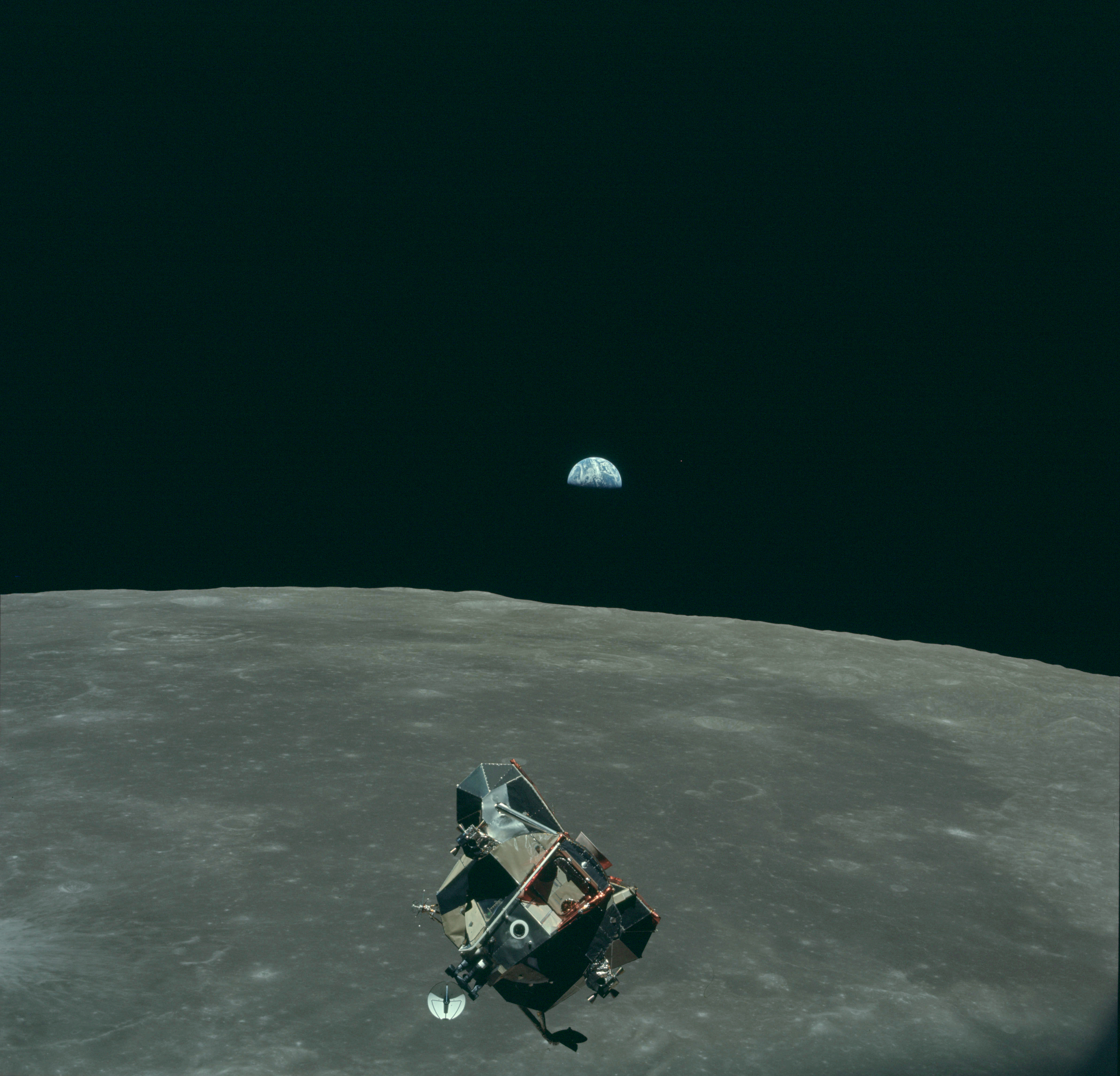
Earth, Moon and Lunar Module (1969, NASA)
The Apollo 11 Lunar Module Eagle launches off the moon to rendezvous with the command module Colombia. Michael Collins had been orbiting the moon for 21 hours, and had not seen the Eagle since it landed. I do not know if this photograph was taken automatically, or if Collins took it himself. Regardless, showing the Moon, Earth, and the Eagle all in a single shot is spectacular, and if you look closely, you can see the planet Mars just to the right of the Earth.
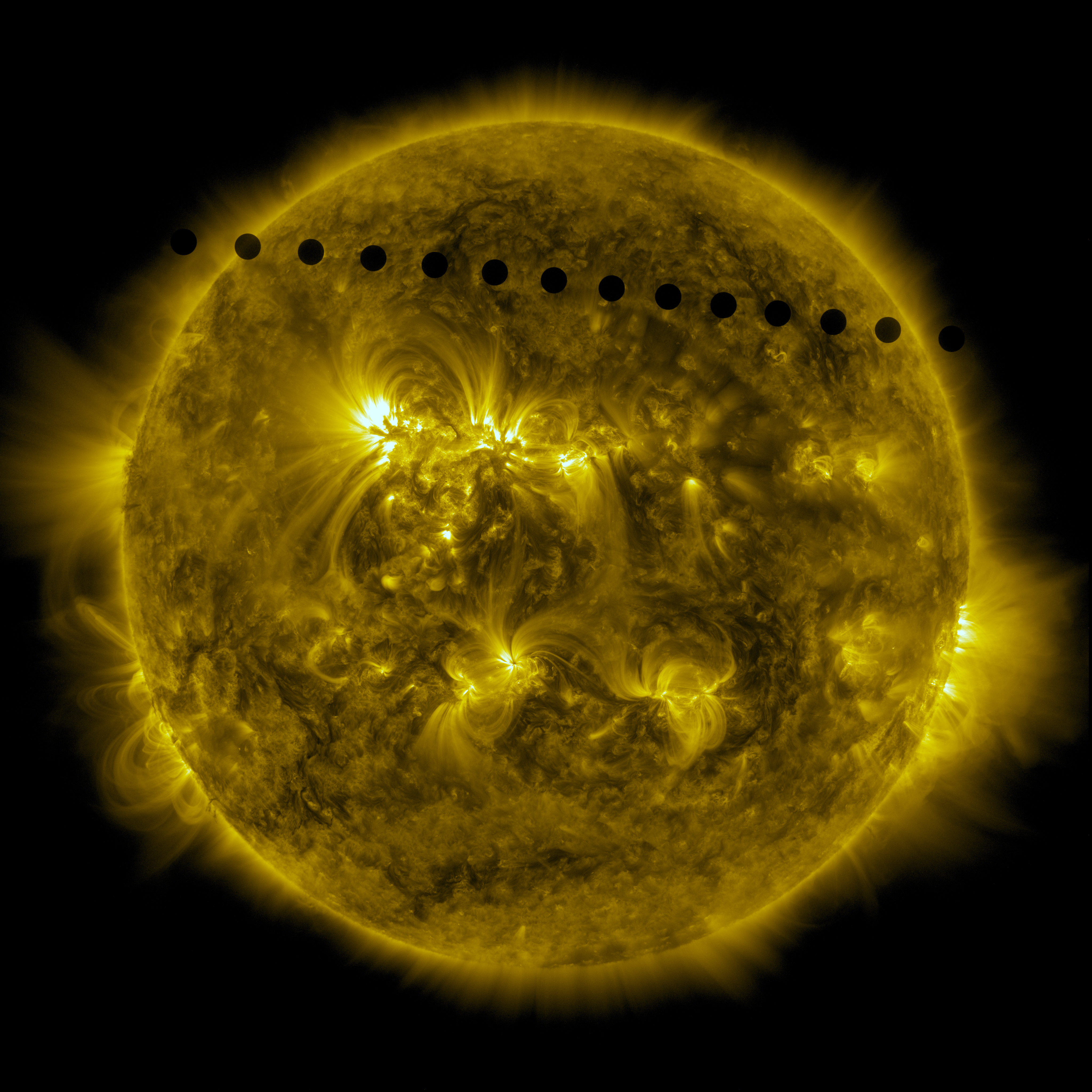
2012 Venus Transit - Path Sequence (2012, Solar Dynamics Observatory)
Because the Sun is about 400 times larger than the Moon, and about 400 times further away from the Earth than the Moon, these two bodies appear almost exactly the same size in the sky. As a result, the standard solar eclipse on Earth is absolutely gorgeous, the Sun's corona visible around the black circular void that is the Moon. I don't believe any photograph of an eclipse will ever do it justice, though. Luckily, the Moon is not the only celestial body that transits between the Earth and the Sun.
Transits of Venus are among the rarest of predictable astronomical phenomena, taking place twice every ~100 years. The next transit of Venus will take place in 2117. Transits of Venus are historically of great scientific importance, as they were used to get the first realistic estimates of the size of the Solar System. The 2012 transit took place shortly after the launch of the Solar Dynamics Observatory. We are very fortunate this astronomical event coincided so beautifully with an influx in excellent solar imaging technology.
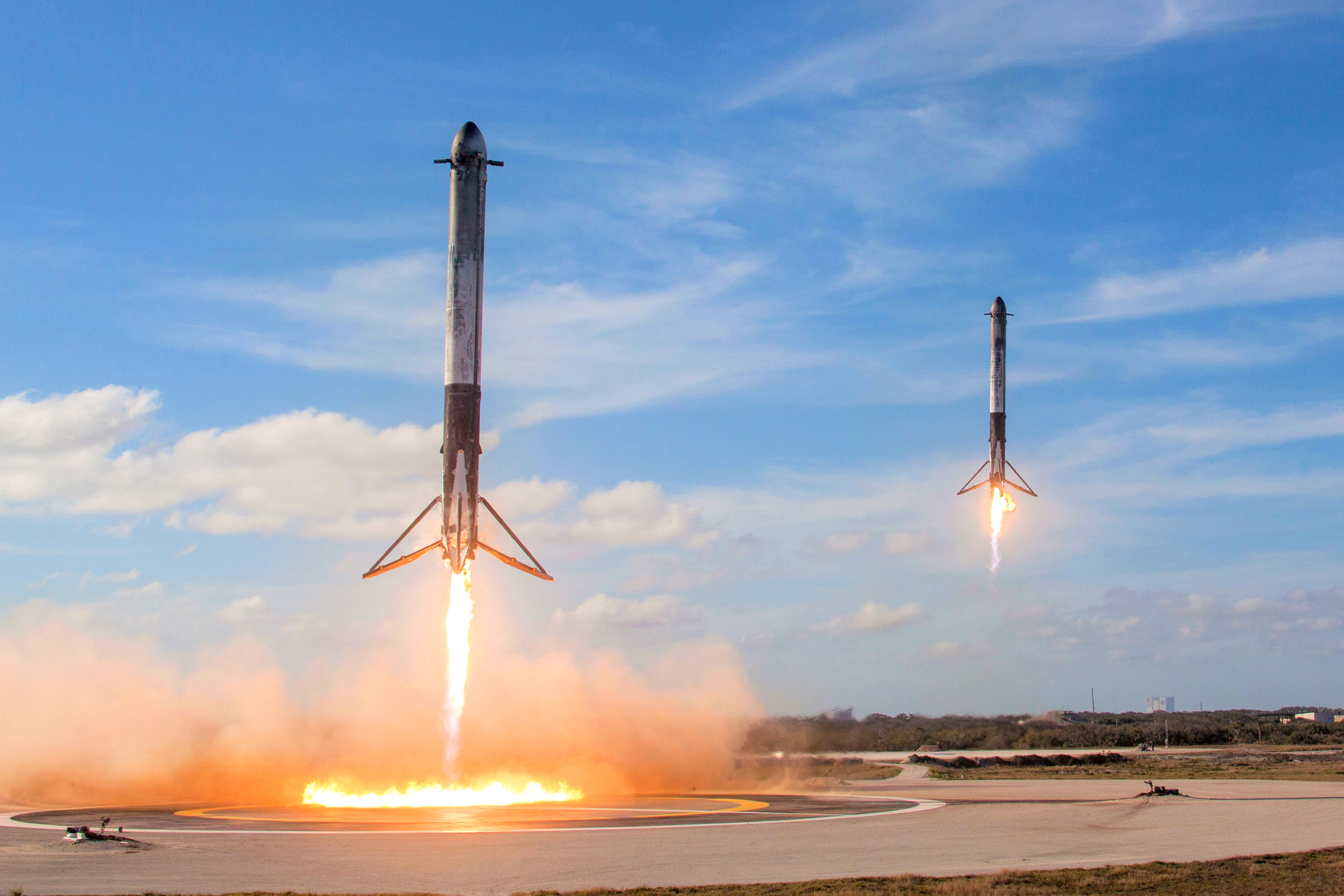
Falcon Heavy Side Boosters landing (2018, SpaceX)
I am generally not particularly taken by rockets and space shuttles, my primary interest lying with the extraterrestrial worlds themselves. However, when I watched the Falcon Heavy test flight of February 2018, I was truly amazed. My personal highlight was not watching the Starman cruise past the Earth (though that was certainly a beautiful experience), it was watching two side boosters landing nearly synchronously on their pads at Cape Canaveral. This moment truly felt to me like we entered a new era of spaceflight.
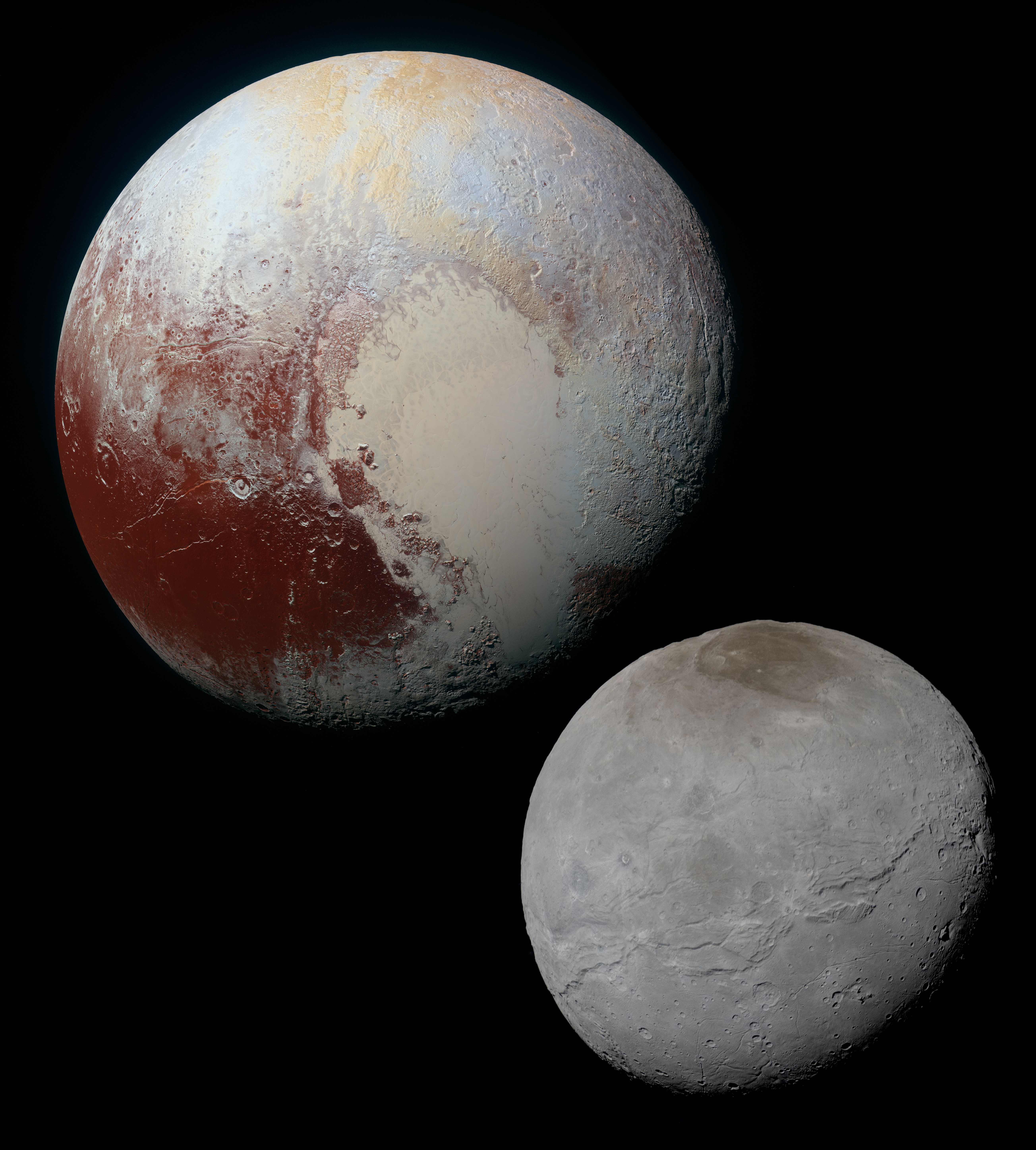
Pluto and Charon (2015, New Horizons)
I would never have the words to describe how amazing Pluto is, but I don't have to, as ParallaxNick said it all for me in his Planet X series. The story of the discovery of Pluto by Clyde Tombaugh and all the events that followed it has affected me greatly.
